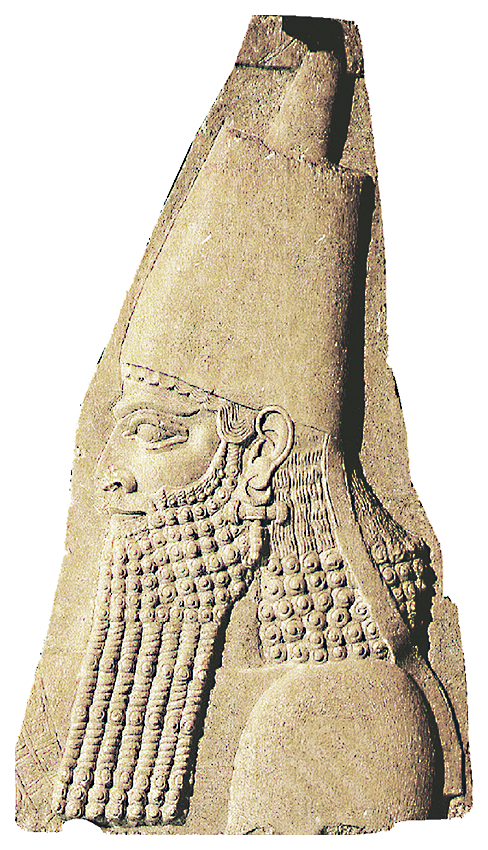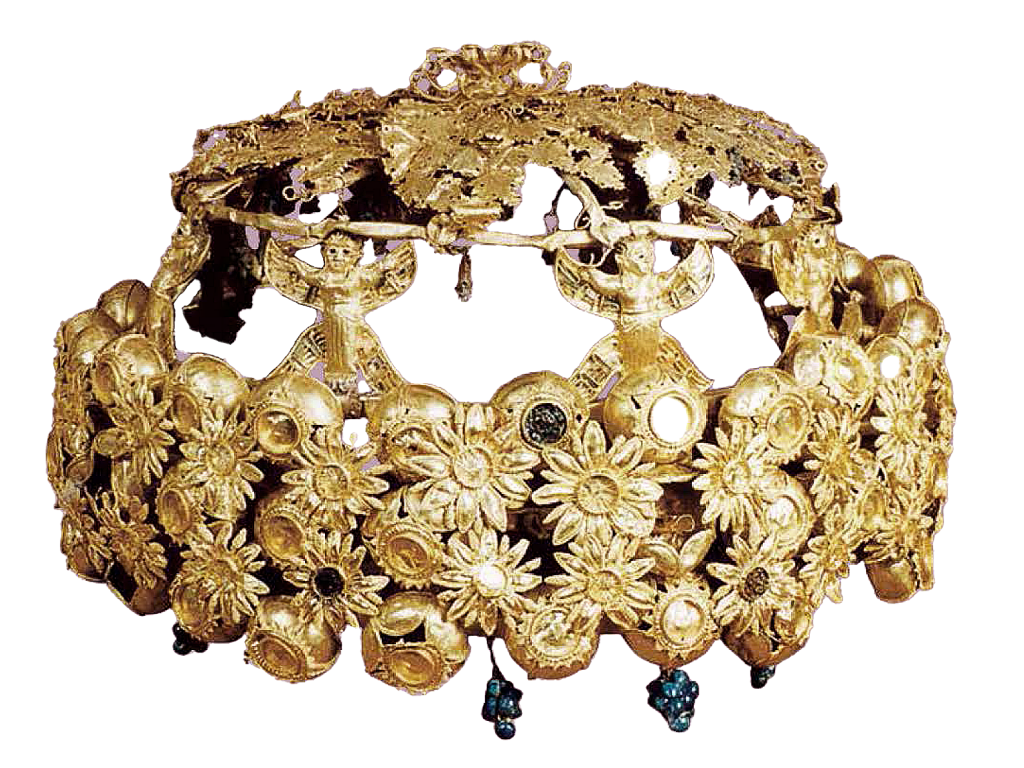
Bible, History, Archaeology
Bible,
History,
Archaeology
Sargon II, king of Assyria
and the wars in the Levant
In 722 BC, Sargon II annexed the kingdom of Israel and deported its population. He crushed the rebellion of the Syrian provinces (Arpad, Damascus, Hamath), supported by Egypt, at Qarqar and Raphia. In 717 BC, he deposed the Hittite king of Karkemish: the city became an Assyrian colony.
 Who is Sargon II?
Who is Sargon II?
Sargon is a Hebrew word derived from the Akkadian Sharrukinu: «the established king».
He succeeded Salmanasar V; perhaps he was of royal blood, as he claims, but it is now thought that he usurped the throne and borrowed the name Sargon from an ancient and famous king of Akkad (circa 2285 to 2229 BC).
The name of Sargon II only appears in the Bible in Isaiah 20,1. His campaigns in Syria and the Levant, however, provide the backdrop for Isaiah's prophecies. There are two possibilities: either he seized the throne and completed the siege of Samaria, capital of the northern kingdom, which Salmanasar had begun in 724 BC, or he acceded to the throne immediately after the fall of Israel's capital. The biblical account does not specify this point (2 Kings 17,1-6). The Bible only says that Salmanasar (V) went up against Hosea (-732/1-722), the last king of the Northern Kingdom, that he besieged Samaria for three years and captured it in the ninth year of Hosea's reign.. In both cases, Samaria fell in 722 B.C. or early 721 B.C., and Sargon II took the throne on the 12th of Tebeth (10th month) in 722 B.C., provoking much resistance.
Image opposite: fragment of a relief representing Sargon II, gypsum alabaster, height 89 cm.
Egyptian Museum, Turin.
The kingdom of Judah narrowly escaped invasion and was granted a reprieve of around 130 years, since the Babylonians, aided by the Elamites, revolted as soon as he took power in 722 BC, and Sargon did not immediately succeed in defeating them.
In 720 BC, the Israelites remaining in Samaria joined forces with the Arameans of Arpad, Hamat and Damascus and rose up. Sargon defeated them near Qarqar and deported prisoners from Hamat as settlers to Samaria. The population of Samaria, meanwhile, was deported to Halahla, north of Nineveh, in Upper Mesopotamia and the Zagros mountains; it seems that these deportees subsequently assimilated into the local population, losing their cultural identity.
Image opposite: Sargon II (on the right) facing a dignitary (perhaps his son Sennacherib?). Assyrian Empire, Khorsabad Palace (ancient Dûr- Sharrukîn), height 3.3 m. Musée du Louvre, Paris. Théo Truschel.
In the same year, the coalition of Hanunu, king of Gaza, and Sib'e, king of Egypt (whom the Bible calls So, 2 Kings 17.4) was defeated at Raphia. Sargon II then captured Karkemish, capital of the Neo-Hittites in northern Syria, in 717. This marked the end of the Hittite Empire.
A few years later, Sargon nevertheless boasted of having subdued Judah. The tablet that declares this seems to predate the end of 714. By comparing Assyrian and Hebrew dates, we can place the moment when Hezekiah, king of Judah, recognized Assyria's suzerainty and began to pay tribute at the end of 715 or the beginning of 714.
Merodak-Baladan, king of Babylon, once again urged the countries stretching from Elam to the Mediterranean to throw off the yoke of Assyria. In 711, Sargon II responded by sending troops against Ashdod. In 710, he put an end to this revolt by taking Babylon, of which he proclaimed himself king. It was under Sargon II that the Assyrian Empire reached its apogee, dominating all its adversaries.
Image opposite: this biconical prism was discovered in Sargon's palace in Khorsabad. It celebrates victories
of the sovereign. Egyptian Museum, Turin.

Depending on the source, Sargon was assassinated or disappeared in 705 BC during an expedition against the Parthians in the Taurus. His body was never found and, perhaps out of superstition, his son Sennacherib (704-681 BC) moved the capital to Nineveh, which he restored and enlarged.
 The discovery of important tombs in 1989
The discovery of important tombs in 1989
In 1989, archaeologist Muzahim Mahmoud Hussein of the Iraqi Antiquities Service found tombs containing vast treasures of gold and precious stones in Kalkhu, Iraq.
Image opposite: a gold crown among the treasures in the tomb of the Neo-Assyrian princess Yabahya © The Oriental Institute of The University of Chicago.
In a sarcophagus, spread over the skeleton of a young princess Yabahya, perhaps the wife of Sargon II, were numerous gold «rosettes» and dozens of gold jewels all around the body. Three months later, Muzahim discovered another tomb nearby. Next to the sarcophagus, which contained only dust, were three bronze vessels filled with 440 gold jewels, weighing a total of 22 kg. These are thought to have belonged to Mullissu-Mukannishat-Ninua, wife of Ashur-Nasirpal II (883-859 BC), whose stele was unearthed on the site by English archaeologist Max Hallowan. Yet another tomb contained a collection of gold necklaces, earrings and pins. The total number of pieces unearthed is close to 10,100, revealing a very high level of quality in Neo-Assyrian jewelry and goldsmithing.


 Who is Sargon II?
Who is Sargon II?
 The discovery of important tombs in 1989
The discovery of important tombs in 1989